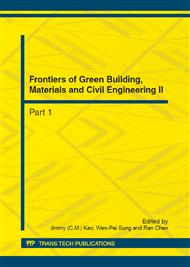p.565
p.569
p.573
p.579
p.584
p.592
p.596
p.600
p.605
Unit Cell Orthogonal Model for Stable Soil Structure
Abstract:
The problem of rock and soil structure has long been a major concern in the field of soil mechanics theory. Some literatures have made preliminary discussions of stable static soil structure. The structural and morphological diversity & complexity of rock and soil which is composed of large number of granules have been extensively recognized. We still only have a vague idea of the properties of rock and soil body with different structure and morphology. To further understand the effect of structure and morphology of rock and soil body on its properties, we established a unit cell orthogonal model. The properties of soil body under this structure and morphology were analyzed; the pattern of changes in some major performance parameters, especially in the presence of pores with different morphologies, was discussed. Analysis of unit cell orthogonal model indicated that the structural performance of rock and soil material was mainly affected by porosity, pore distribution, morphology and directionality. The related variation patterns are summarized as follows. The greater the pore area (volume) was, the greater its impact on structural performance would be; the impact of pore distribution relied on pore size. At a fixed porosity, the more scattered the pores were, i.e. the greater the number of pores was, the larger the pore surface area was, and the greater its impact on structural performance (stiffness) would be; on the contrary, the smaller the number of pores was, i.e. the more concentrated the pores were, the greater the soil stiffness would be. These results of analysis agreed well with our past experiences.
Info:
Periodical:
Pages:
584-591
Citation:
Online since:
August 2012
Authors:
Keywords:
Price:
Сopyright:
© 2012 Trans Tech Publications Ltd. All Rights Reserved
Share:
Citation:


